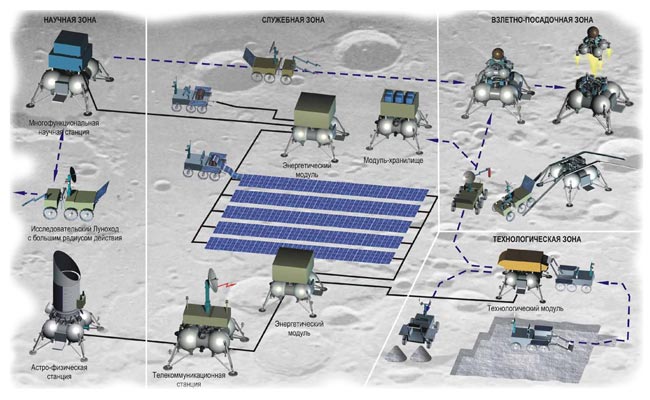E
exoscientist
Guest
Both Russia and China are planning lander missions to the Moon as early as 2012 to test the presence of volatiles in the lunar polar regions, such as with the Luna-Glob mission. Even more important may be their in situ investigation of valuable minerals suggested by the LCROSS mission. It would be quite ironic if the U.S. LCROSS mission first demonstated the presence of these minerals but Russia and China were first to exploit them.
There have been some arguments that it is important for the U.S. to investigate the retrieval of valuable rare earth elements from the Moon because of their strategic importance, while China maintains the overwhelmingly largest supply of them:
Is Mining Rare Minerals on the Moon Vital to National Security?
By Leonard David
SPACE.com's Space Insider Columnist
posted: 04 October 2010 08:10 am ET
""Resource knowledge is one aspect of lunar exploration that certainly drives the non-US space-faring nations. It is disappointing that planners in our [U.S.] space program have not invested in that scope or time scale," Pieters added. "Other than the flurry over looking for water in lunar polar shadows, no serious effort has been taken to document and evaluate the mineral resources that occur on Earth's nearest neighbor. Frustrating!""
http://www.space.com/news/moon-mining-r ... 01004.html
See also the associated links in this article.
The U.S. not sending its own lander probes and in the near term may allow Russia and China to have abundant supplies of these minerals with the U.S. dependent on them for its own supplies.
As with the plans for mining copper and gold from the sea floor, the importance of the REE's and their rising prices have led to suggestions sea floor mining should be undertaken for them as well:
With Limited Deposits of Rare Earth Metals on the Surface, Eyes Turn to the Seafloor.
By Clay Dillow Posted 11.12.2010 at 10:58 am
http://www.popsci.com/technology/articl ... loor?page=
That they could be financially profitable to be mined from the sea floor despite the expense raises the possibility lunar mining for them could be financially profitable if they are in the high concentrations expected.
As I mentioned simple lander missions could be mounted for a few tens of millions of dollars if, for example, launched on the Russian Dnepr rocket. NASA might be disinclined to make use of this method of launching quick, low cost precursor missions. However, the U.S. could encourage business concerns to undertake such missions by offering tax breaks on the minerals returned from lunar mining. This if successful would have strategic benefits as well as making possible large scale interplanetary missions, including manned ones, from the use of the lunar propellant that would naturally become available during the lunar mining for minerals.
Bob Clark
There have been some arguments that it is important for the U.S. to investigate the retrieval of valuable rare earth elements from the Moon because of their strategic importance, while China maintains the overwhelmingly largest supply of them:
Is Mining Rare Minerals on the Moon Vital to National Security?
By Leonard David
SPACE.com's Space Insider Columnist
posted: 04 October 2010 08:10 am ET
""Resource knowledge is one aspect of lunar exploration that certainly drives the non-US space-faring nations. It is disappointing that planners in our [U.S.] space program have not invested in that scope or time scale," Pieters added. "Other than the flurry over looking for water in lunar polar shadows, no serious effort has been taken to document and evaluate the mineral resources that occur on Earth's nearest neighbor. Frustrating!""
http://www.space.com/news/moon-mining-r ... 01004.html
See also the associated links in this article.
The U.S. not sending its own lander probes and in the near term may allow Russia and China to have abundant supplies of these minerals with the U.S. dependent on them for its own supplies.
As with the plans for mining copper and gold from the sea floor, the importance of the REE's and their rising prices have led to suggestions sea floor mining should be undertaken for them as well:
With Limited Deposits of Rare Earth Metals on the Surface, Eyes Turn to the Seafloor.
By Clay Dillow Posted 11.12.2010 at 10:58 am
http://www.popsci.com/technology/articl ... loor?page=
That they could be financially profitable to be mined from the sea floor despite the expense raises the possibility lunar mining for them could be financially profitable if they are in the high concentrations expected.
As I mentioned simple lander missions could be mounted for a few tens of millions of dollars if, for example, launched on the Russian Dnepr rocket. NASA might be disinclined to make use of this method of launching quick, low cost precursor missions. However, the U.S. could encourage business concerns to undertake such missions by offering tax breaks on the minerals returned from lunar mining. This if successful would have strategic benefits as well as making possible large scale interplanetary missions, including manned ones, from the use of the lunar propellant that would naturally become available during the lunar mining for minerals.
Bob Clark




